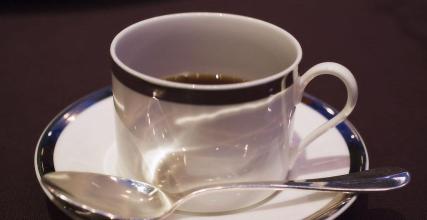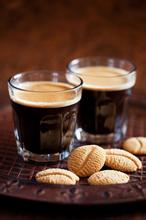How to taste the flavor of Guatemalan coffee slightly Nanguo highland Waiqiang plateau
The first step is to smell the dry aroma of coffee Fragrance: put freshly ground coffee powder close to your mouth and nose, and you will feel the dry aroma of different coffees from different coffee producing areas. For example, in Latin American coffee, you will smell something similar to nuts and dark chocolate, while coffee in Africa has more floral and fruit flavors. These differences are brought about by differences in plantations.
The second step is to taste the flavor Flavor: when the coffee is in your mouth, you can feel its flavor. In this respect, many enthusiasts, especially those who are just beginning to come into contact with coffee tasting, always think that coffee doesn't smell good. It is true that the sensory discrimination of coffee liquid in the mouth requires a certain amount of exercise, but over time, the flavor can be detected. We still compare Yega Schiffe with washing Guatemala, and some friends say, "I know they taste different, but I don't know how they are different." This is a real situation, but don't worry.
The third step, feel the aftertaste: after drinking the coffee, there will always be a taste back from the throat, some aftertaste is very long and clear, some is very short and very vague. We say that a longer and clearer aftertaste is good, and the quality of raw coffee beans is higher.
The fourth step, know the acidity: many friends do not like sour coffee, like very mellow or even strong coffee, think that this is strong enough. But if you want to be a coffee connoisseur, the key to getting started is to know the acid in coffee. However, it must be made clear here that the more sour coffee is, the better. The sweet and sour substances in coffee are components of the complexity of coffee flavor. In fact, without talking about coffee, people's understanding of acid will become much easier. Here is an example: squeeze a lemon into juice, divide it into three equal cups, add a small spoonful of sugar in the second cup and two tablespoons of sugar in the third cup, then the acidity of the first cup of coffee is higher than that of the third cup, but these three cups of different types of acid, we say the acidity is different. Some coffee is very acidity, very smack, in the professional cup test, we still give it a very low score, some coffee although sour, but sweet with sour kind of very comfortable and round acid, we will give it a high score.
Step 5, feel mellow: in professional coffee tasting, this indicator is also known as taste, which is visually interpreted as water and oil. Oil is thicker than water, so the taste value will be higher than water, high-quality coffee will be fuller than low-quality coffee mouth feel, more weight, the score will be higher. Some coffee will feel very full in the mouth, while some coffee will be very water quality, the taste is erratic and short-lived, the former is excellent and the latter is bad.
The sixth step is to find defects: there is no negative taste in the whole process of a cup of coffee from smelling dry fragrance to drinking it, such as unclean, astringent and fermented taste. if there is such a taste, we think that this kind of coffee is unclean and must not become fine coffee. Many friends hope to make a breakthrough in the cup as soon as possible, but the core task of this breakthrough is to find and grasp the negative taste.

Important Notice :
前街咖啡 FrontStreet Coffee has moved to new addredd:
FrontStreet Coffee Address: 315,Donghua East Road,GuangZhou
Tel:020 38364473
- Prev

Kenyan coffee with a very strong aroma of wine
Kenyan coffee is mostly grown at 15002100 meters above sea level and is harvested twice a year. Kenyan industrious people love coffee as much as lovers in love. Accounting for 55% of Kenya's total coffee production (40% of the number of estates) is run by numerous small operators. Seeing that coffee is absolutely profitable, these small operators continue to improve their interest to farmers.
- Next

Coffee Snow vein Manor in Bolivia with medium and low acidity
Most of the coffee in Bolivia is of mediocre quality, but the production of boutique coffee has developed rapidly in recent years, and there have been a lot of pretty good beans. In recent years, the COE (Cup of excellence) system, which was first implemented in Brazil, has gradually become popular. Bolivia has also introduced this system, which can stimulate the enthusiasm of coffee farmers on the one hand and improve coffee on the other.
Related
- Does Rose Summer choose Blue, Green or Red? Detailed explanation of Rose Summer Coffee plots and Classification in Panamanian Jade Manor
- What is the difference between the origin, producing area, processing plant, cooperative and manor of coffee beans?
- How fine does the espresso powder fit? how to grind the espresso?
- Sca coffee roasting degree color card coffee roasting degree 8 roasting color values what do you mean?
- The practice of lattes: how to make lattes at home
- Introduction to Indonesian Fine Coffee beans-- Java Coffee producing area of Indonesian Arabica Coffee
- How much will the flavor of light and medium roasted rose summer be expressed? What baking level is rose summer suitable for?
- Introduction to the characteristics of washing, sun-drying or wet-planing coffee commonly used in Mantenin, Indonesia
- Price characteristics of Arabica Coffee Bean Starbucks introduction to Manning Coffee Bean Taste producing area Variety Manor
- What is the authentic Yega flavor? What are the flavor characteristics of the really excellent Yejasuffi coffee beans?

